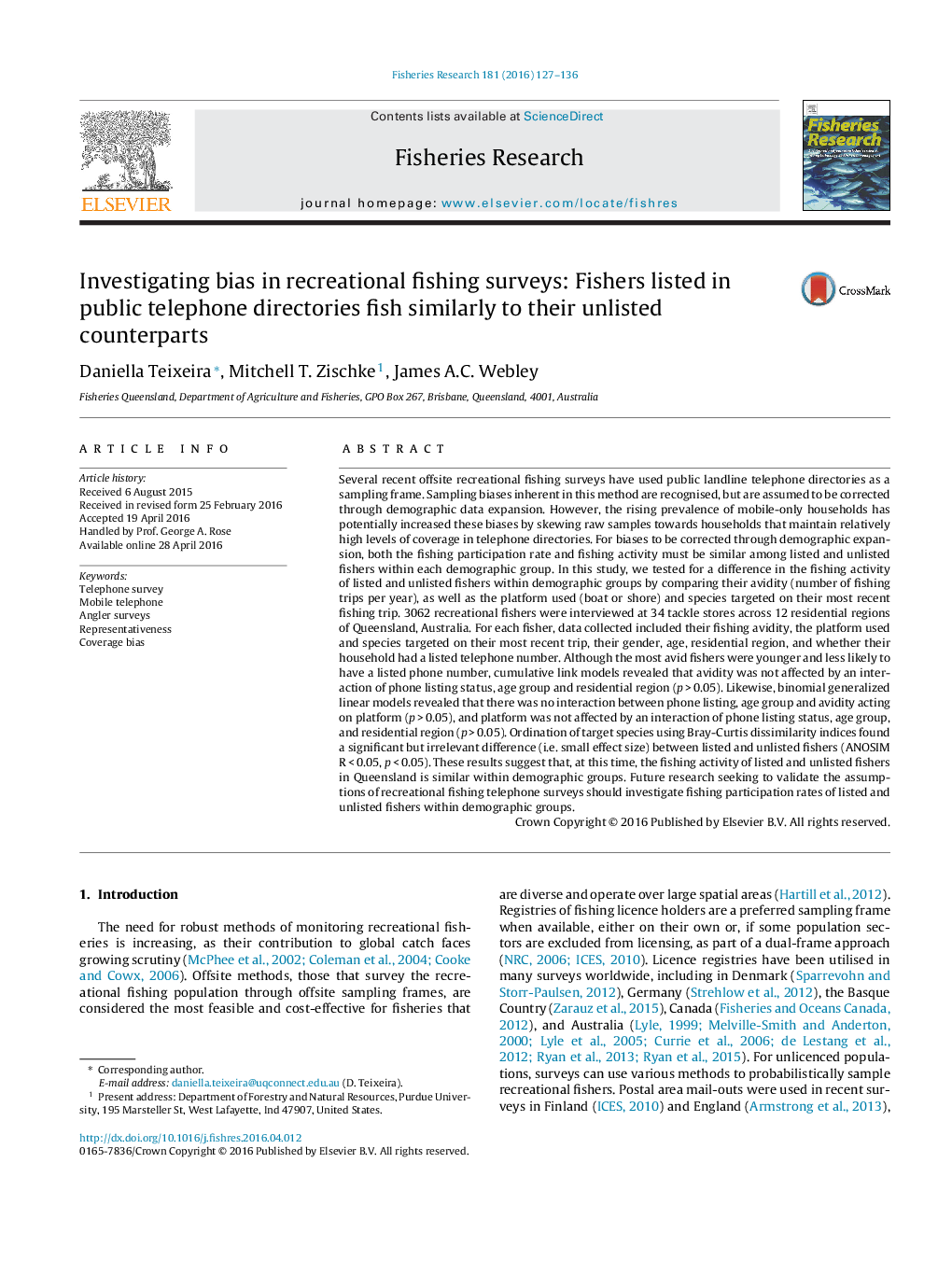| کد مقاله | کد نشریه | سال انتشار | مقاله انگلیسی | نسخه تمام متن |
|---|---|---|---|---|
| 4542695 | 1626788 | 2016 | 10 صفحه PDF | دانلود رایگان |
• The proportion of households listed in public phone directories is falling.
• Some recreational fishing surveys use phone directories as a sampling frame.
• Recreational fishing activity was compared between listed and unlisted fishers.
• Within demographic groups, listed and unlisted people fished similarly.
• Currently, telephone directories are suitable as a sampling frame in Queensland, Australia.
Several recent offsite recreational fishing surveys have used public landline telephone directories as a sampling frame. Sampling biases inherent in this method are recognised, but are assumed to be corrected through demographic data expansion. However, the rising prevalence of mobile-only households has potentially increased these biases by skewing raw samples towards households that maintain relatively high levels of coverage in telephone directories. For biases to be corrected through demographic expansion, both the fishing participation rate and fishing activity must be similar among listed and unlisted fishers within each demographic group. In this study, we tested for a difference in the fishing activity of listed and unlisted fishers within demographic groups by comparing their avidity (number of fishing trips per year), as well as the platform used (boat or shore) and species targeted on their most recent fishing trip. 3062 recreational fishers were interviewed at 34 tackle stores across 12 residential regions of Queensland, Australia. For each fisher, data collected included their fishing avidity, the platform used and species targeted on their most recent trip, their gender, age, residential region, and whether their household had a listed telephone number. Although the most avid fishers were younger and less likely to have a listed phone number, cumulative link models revealed that avidity was not affected by an interaction of phone listing status, age group and residential region (p > 0.05). Likewise, binomial generalized linear models revealed that there was no interaction between phone listing, age group and avidity acting on platform (p > 0.05), and platform was not affected by an interaction of phone listing status, age group, and residential region (p > 0.05). Ordination of target species using Bray-Curtis dissimilarity indices found a significant but irrelevant difference (i.e. small effect size) between listed and unlisted fishers (ANOSIM R < 0.05, p < 0.05). These results suggest that, at this time, the fishing activity of listed and unlisted fishers in Queensland is similar within demographic groups. Future research seeking to validate the assumptions of recreational fishing telephone surveys should investigate fishing participation rates of listed and unlisted fishers within demographic groups.
Journal: Fisheries Research - Volume 181, September 2016, Pages 127–136
